Urban areas present some distinct challenges for archaeologists; they generally feature complex soil layering due to their intensive use and are frequently paved or otherwise inaccessible by hand excavation. The methods that we used at 7 Hawley Street were designed to address the challenges of urban areas. The area needed to be stripped of asphalt and more than 3 ft of fill above the intact deposits, which was documented during 1989 testing. A backhoe with an experienced operator was used to strip this fill, monitored by archaeologists. Stripping revealed many features and intact yard deposits, which were then recorded and excavated. A series of 1 m2 (3.3 ft2) units were used to sample intact yard deposits before final mechanical stripping down to subsoil (B horizon) to document any remaining features.
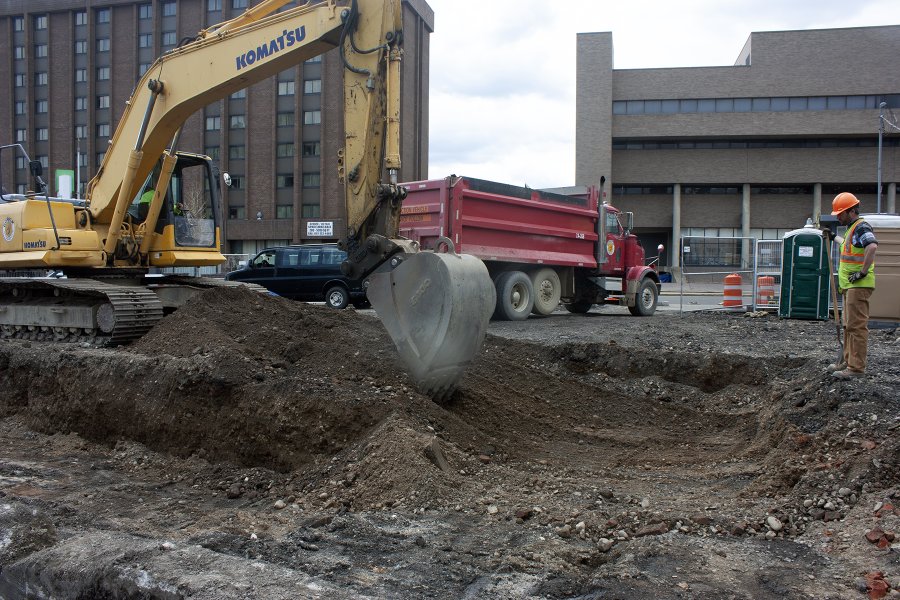
Mechanical stripping at 7 Hawley Street.
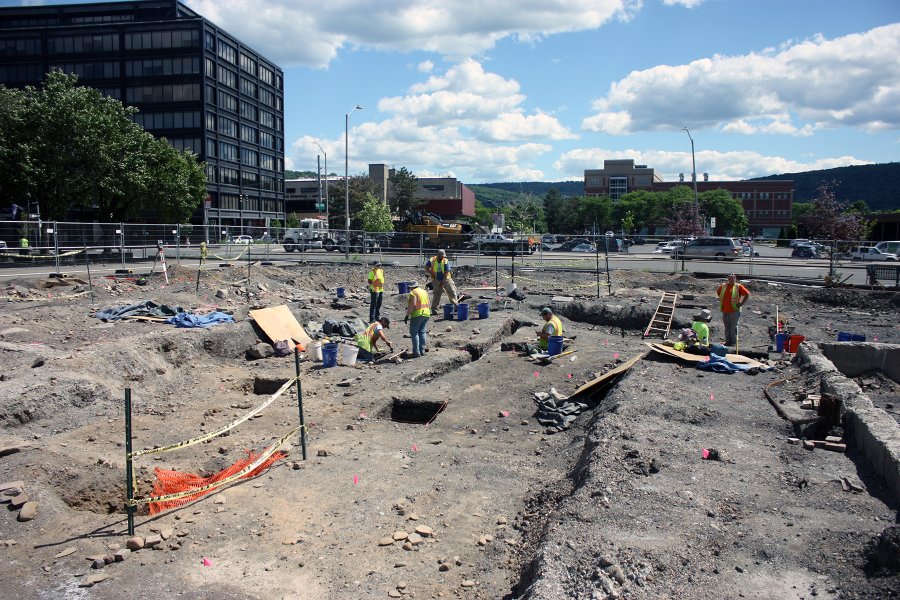
Archaeologists excavating features and sampling yard deposits at 7 Hawley Street.
Archaeological investigations took nearly two months in the summer of 2018 and produced some exciting results. The 2018 work largely confirmed the impression from the 1989 testing that a large precontact occupation would not be present in the 7 Hawley Street project area. Only nine precontact cultural features were identified and these were primarily stains representing small pits or post molds. Archaeologists recovered 252 precontact artifacts from intact soils, including debitage (waste flakes) from stone tool manufacturing., fire-cracked rock, and a net weight. Some of the stone material was non-local jasper from Pennsylvania. Remains related to 19th and 20th century properties were far more extensive and included building foundations, cisterns, and trash pits. Post-Contact, historic artifacts included a wide variety of items such as ceramic dishes; drinking glasses; smoking pipes; bottles that held medicine, liquor, beer, and soda, among other things; architectural items, including nails and window glass; hardware; buttons from clothing; old shoes; and animal bone. The artifact assemblage from the 19th and 20th centuries numbered more than 10,000 items.
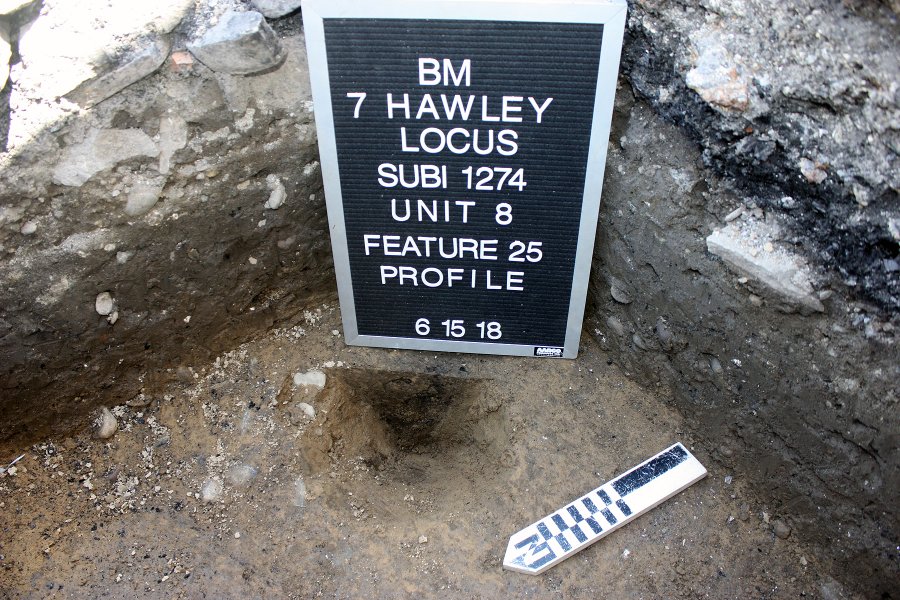
Profile view of a precontact post mold representing the location of a post that was placed in the ground.
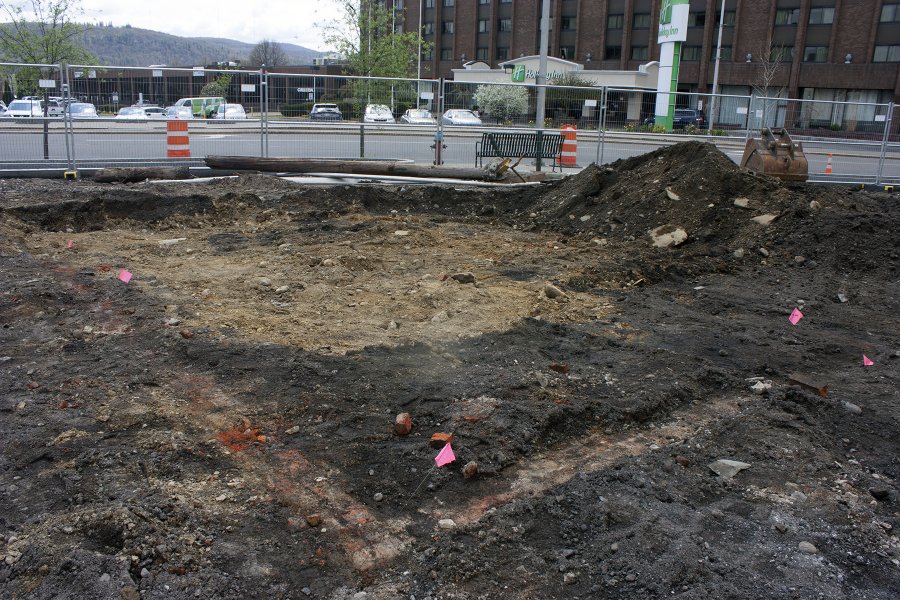
This brick foundation facing Hawley Street represents a rear addition to the home that once stood (the rest of the house was probably destroyed when Hawley was widened and curved in the 1960s). The house was built c. 1872 and used as a rental property until it was purchased by Fanny Beebee in 1889.
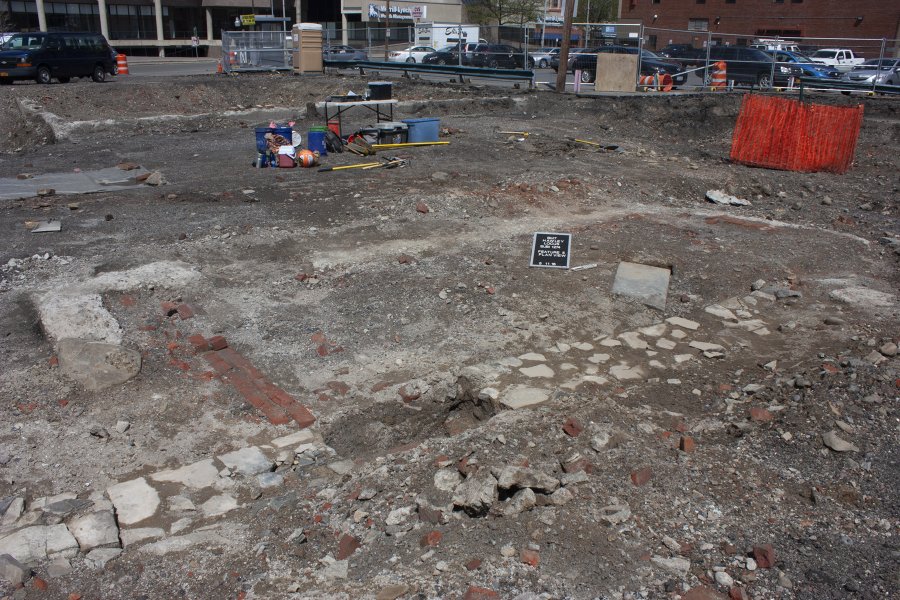
This foundation is a portion of the rear wall (with a concrete addition) of the line of commercial buildings along Washington Street built in the late 19th century. This section of foundation was part of 117 Washington Street, which for many years the late 19th century was James Prendergast’s tin and stove shop; it was later converted into a sausage factory.
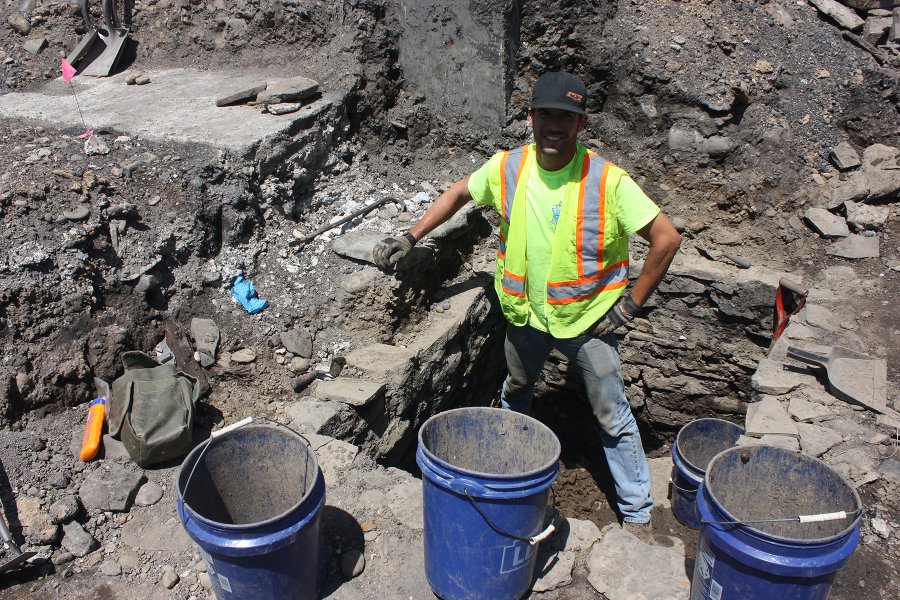
A privy (outhouse) at the rear of Bartlett property. You can see how deeply buried this privy was below surface with a later concrete wall and several layers of soil above it. It was probably not filled well originally, because soils above it indicate that there were several slumping and filling episodes.
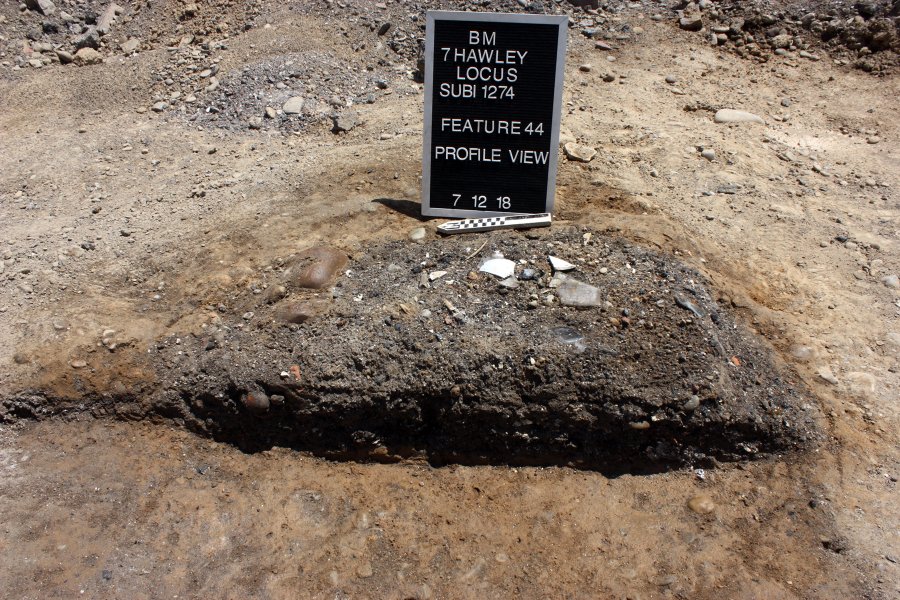
A historic trash pit in cross section from the late 19th to early 20th centuries.